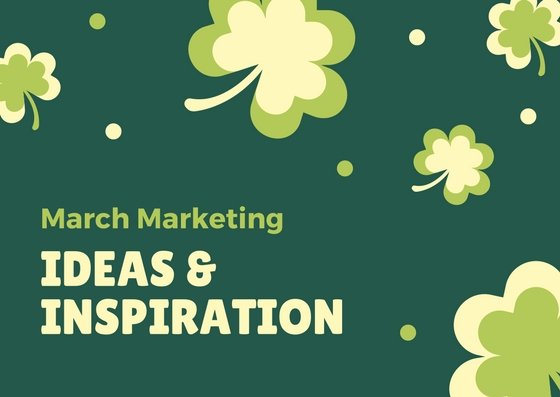Starting a new business is an exciting journey, but reaching potential customers and building your brand can be challenging. Innovative marketing ideas can help you stand out in a crowded market, attract attention, and grow your business. In this article, we will explore various unique and actionable marketing strategies that can give your new business the boost it needs to succeed.
Understanding Your Market
Conducting In-Depth Market Research
Market research is the foundation of a successful marketing strategy. To gain a thorough understanding of your market, go beyond basic demographics and explore psychographics, which include your audience’s values, attitudes, interests, and lifestyles.
Conducting comprehensive surveys, interviews, and focus groups can provide deeper insights. Use online tools like Google Analytics, social media insights, and customer feedback to gather data. This information will help you create highly targeted marketing campaigns that resonate with your audience on a personal level.
Identifying Market Gaps
Look for gaps in the market where competitors are not fully meeting customer needs. This involves analyzing current market trends and consumer behaviors.
For example, you might find that existing products lack certain features that customers are looking for or that there is a demand for a more eco-friendly alternative. By identifying and addressing these gaps, you can position your business as a unique solution provider and attract a loyal customer base.
Monitoring Industry Trends
Staying up-to-date with industry trends is crucial for maintaining relevance and competitiveness. Subscribe to industry publications, follow thought leaders on social media, and participate in webinars and conferences.
Regularly reviewing industry reports and case studies can also provide valuable insights. Use this information to anticipate changes in the market and adjust your strategies accordingly. Being proactive rather than reactive can give you a significant advantage.
Segmenting Your Market
Market segmentation involves dividing your broader target market into smaller, more manageable groups based on shared characteristics. These segments could be based on demographics, geographic locations, behavioral patterns, or psychographic traits.
By creating detailed profiles for each segment, you can tailor your marketing messages and offers to better meet their specific needs. This approach increases the effectiveness of your marketing efforts and improves customer satisfaction.
Developing a Unique Value Proposition
Your unique value proposition (UVP) is what sets your business apart from competitors. It should clearly communicate the benefits of your product or service and why customers should choose you over others.
To develop a strong UVP, focus on the specific needs and pain points of your target market. Highlight how your offering provides solutions that competitors do not. A compelling UVP can be a powerful tool in attracting and retaining customers.
Building Customer Relationships
Understanding your market is not just about gathering data; it’s also about building strong relationships with your customers. Engage with your audience through various channels, such as social media, email, and in-person events.
Listen to their feedback and show that you value their opinions. This ongoing dialogue helps you stay attuned to their evolving needs and preferences, allowing you to adapt your strategies and offerings accordingly.
Utilizing Competitive Analysis Tools
There are numerous tools available that can help you conduct competitive analysis more efficiently. Tools like SEMrush, Ahrefs, and SpyFu allow you to analyze your competitors’ SEO strategies, keyword usage, and backlink profiles.
Social listening tools like Hootsuite and Brandwatch can provide insights into how competitors are engaging with their audience on social media. Using these tools can help you identify opportunities to outperform your competition and refine your own strategies.
Understanding Customer Journey Mapping
Customer journey mapping is the process of visualizing the steps your customers go through when interacting with your brand. This includes awareness, consideration, purchase, and post-purchase stages. By mapping out this journey, you can identify key touchpoints where you can influence their decisions and improve their experience.
Use data from your CRM, website analytics, and customer feedback to create accurate journey maps. Understanding this journey allows you to create targeted marketing campaigns that guide customers smoothly through each stage.
Testing and Refining Your Strategies
Continuous testing and refinement are essential for staying aligned with your market. Use A/B testing to compare different marketing messages, visuals, and calls-to-action to see which ones resonate best with your audience.
Analyze the results and use the insights to make data-driven decisions. This iterative process helps you optimize your strategies and ensures that your marketing efforts remain effective and relevant.
Building a Strong Brand Identity
A strong brand identity helps you stand out in a crowded market. Develop a cohesive brand strategy that includes your brand’s mission, vision, values, and voice.
Ensure that your branding is consistent across all touchpoints, from your website and social media to your packaging and customer service. A strong brand identity builds trust and loyalty, making it easier for customers to choose your business over competitors.
Building a Strong Online Presence

Developing a Comprehensive Content Strategy
Creating a comprehensive content strategy is essential for building a strong online presence. Start by identifying the key topics that resonate with your target audience and align with your business goals. Develop a content calendar that outlines when and where you will publish different types of content, such as blog posts, videos, infographics, and social media updates.
Ensure that your content provides value, addresses customer pain points, and positions your business as an authority in your industry. Regularly review and adjust your strategy based on performance metrics to keep your content fresh and relevant.
Utilizing Interactive Content
Interactive content can significantly enhance user engagement on your website and social media platforms. Consider creating quizzes, polls, surveys, and interactive infographics that encourage users to participate and share their results.
Interactive content not only keeps your audience engaged but also provides valuable insights into their preferences and behaviors. Use these insights to tailor your marketing efforts and create more personalized experiences for your customers.
Investing in High-Quality Visuals
High-quality visuals are crucial for making a strong impression online. Invest in professional photography and graphic design to ensure that your website and social media profiles are visually appealing. High-quality images and videos can significantly improve engagement and conversion rates.
Use visuals to tell your brand story, showcase your products, and highlight customer testimonials. Consistent and visually appealing branding across all online platforms reinforces your brand identity and builds trust with your audience.
Implementing Advanced SEO Techniques
Basic SEO practices are essential, but to stand out in competitive markets, you need to implement advanced SEO techniques. Focus on long-tail keywords that are more specific and less competitive. Optimize your content for voice search by incorporating natural language phrases and questions.
Ensure that your website is technically sound with a clean URL structure, fast loading times, and mobile optimization. Use schema markup to enhance your search engine listings with rich snippets, which can improve click-through rates.
Leveraging Local SEO
If your business has a physical location, local SEO is critical for attracting nearby customers. Optimize your Google My Business profile with accurate and up-to-date information, including your address, phone number, hours of operation, and photos.
Encourage satisfied customers to leave positive reviews, as these can significantly impact your local search rankings. Use local keywords in your website content and meta descriptions, and create location-specific landing pages to attract local traffic.
Engaging with Social Media Stories
Social media stories, available on platforms like Instagram, Facebook, and Snapchat, offer a unique way to engage with your audience. Stories are short, ephemeral posts that disappear after 24 hours, creating a sense of urgency and exclusivity.
Use stories to share behind-the-scenes content, promote limited-time offers, and interact with your audience through polls and Q&A sessions. Highlight your most popular stories to keep them accessible beyond the 24-hour window.
Hosting Virtual Events
Virtual events can help you reach a global audience and showcase your expertise. Host webinars, live Q&A sessions, and virtual workshops that provide value to your audience. Use these events to demonstrate your products, share industry insights, and engage with potential customers in real-time.
Promote your virtual events through your website, email marketing, and social media to attract attendees. Record the sessions and make them available on-demand to extend their reach.
Building a Community with Online Forums
Creating an online forum or community can foster deeper connections with your audience. Use platforms like Reddit, Facebook Groups, or a dedicated forum on your website to provide a space for customers to discuss topics related to your industry, ask questions, and share their experiences.
Actively participate in these discussions to provide valuable insights and build relationships. An engaged community can become a powerful advocate for your brand and provide valuable feedback.
Leveraging Influencer Marketing
Influencer marketing involves partnering with individuals who have a significant following in your target market. Collaborate with influencers to create authentic content that showcases your products or services. Choose influencers whose values and audience align with your brand to ensure genuine endorsements.
Track the performance of your influencer campaigns to measure their impact and adjust your strategy as needed. Influencer marketing can help you reach new audiences and build credibility quickly.
Utilizing Data-Driven Marketing
Data-driven marketing involves using data and analytics to inform your marketing decisions. Use tools like Google Analytics, social media insights, and CRM software to track the performance of your marketing efforts.
Analyze this data to identify trends, understand customer behavior, and optimize your strategies. Data-driven marketing allows you to make informed decisions, allocate resources effectively, and improve your ROI.
Creating Personalized Experiences
Personalization is key to building strong relationships with your customers. Use customer data to create personalized experiences across all touchpoints. Send targeted email campaigns based on customer preferences and behaviors.
Offer personalized product recommendations on your website. Use retargeting ads to reach customers who have shown interest in your products. Personalization makes customers feel valued and increases their likelihood of making a purchase.
Innovative Marketing Techniques
Implementing Guerilla Marketing
Guerrilla marketing involves unconventional and creative tactics to promote your business. This type of marketing can be highly effective for new businesses with limited budgets. Consider organizing flash mobs, creating eye-catching street art, or distributing clever and memorable flyers in high-traffic areas. T
hese activities generate buzz and word-of-mouth advertising. Ensure that your guerrilla marketing efforts align with your brand message and values to create a cohesive and impactful impression.
Utilizing Augmented Reality (AR)
Augmented reality can provide interactive and immersive experiences that engage customers in unique ways. Develop AR features that allow customers to visualize products in their own space, try on virtual items, or engage with interactive advertisements.
For example, a furniture store can create an AR app that lets customers see how different pieces would look in their home. Promote your AR experiences through your website and social media to attract tech-savvy customers and enhance their shopping experience.
Hosting Pop-Up Events
Pop-up events create a sense of urgency and exclusivity that can draw significant attention. Host temporary events in unexpected locations to showcase your products and create a memorable experience.
These can include pop-up shops, product launches, or themed parties. Collaborate with local influencers or artists to enhance the appeal of your event. Use social media and email marketing to promote your pop-up events and generate buzz.
Launching a Referral Program
Referral programs incentivize existing customers to bring in new ones. Develop a referral program that rewards customers for recommending your business to their friends and family. Offer discounts, free products, or exclusive access to new releases as rewards.
Promote your referral program through your website, email newsletters, and social media. A well-structured referral program can rapidly expand your customer base and build a community of loyal advocates.
Creating a Podcast
Podcasts are an excellent way to share your expertise and connect with your audience on a deeper level. Launch a podcast that covers topics relevant to your industry and provides value to your listeners.
Invite industry experts, share behind-the-scenes stories, and offer practical advice. Promote your podcast on your website, social media, and podcast directories. Consistent, high-quality content can establish you as a thought leader and attract a dedicated following.
Leveraging User-Generated Content (UGC)
Encourage your customers to create and share content related to your brand. User-generated content can include reviews, social media posts, photos, and videos. Create campaigns that incentivize customers to share their experiences, such as contests or challenges with prizes.
Feature the best UGC on your website and social media channels. UGC builds trust and authenticity, showing potential customers real-life endorsements of your products.
Developing a Loyalty Program
A well-designed loyalty program can encourage repeat business and increase customer retention. Offer rewards such as discounts, exclusive products, or early access to sales for loyal customers. Use a points system where customers earn points for purchases and interactions that can be redeemed for rewards.
Promote your loyalty program through your website, email campaigns, and in-store signage. Regularly update and enhance the program to keep it engaging and valuable.
Utilizing Live Streaming
Live streaming is a powerful tool for real-time engagement with your audience. Use platforms like Facebook Live, Instagram Live, and YouTube Live to host live events, product demonstrations, Q&A sessions, and behind-the-scenes tours.
Live streaming allows you to interact directly with viewers, answer their questions, and provide immediate value. Promote your live streams in advance to build anticipation and ensure a strong turnout.

Engaging in Cause Marketing
Align your brand with a cause that resonates with your target audience. Partner with a charity or nonprofit organization and create campaigns that support their mission.
This could involve donating a portion of your sales, organizing fundraising events, or participating in community service projects. Cause marketing not only enhances your brand’s reputation but also builds a deeper connection with socially conscious consumers.
Offering Subscription Services
Subscription services can provide a steady revenue stream and increase customer loyalty. Develop subscription-based offerings that deliver consistent value to your customers. This could include monthly product boxes, exclusive content, or access to premium services.
Promote your subscription services through your website, social media, and email marketing. Ensure that the subscription experience is seamless and provides ongoing value to retain subscribers.
Personalizing Marketing Campaigns
Personalization is key to creating meaningful connections with your audience. Use data analytics to understand your customers’ preferences, behaviors, and purchase history. Personalize your marketing campaigns by tailoring messages, offers, and recommendations to individual customers.
This can include personalized email campaigns, targeted social media ads, and customized website experiences. Personalization makes customers feel valued and increases their likelihood of making a purchase.
Creating an Interactive Website
An interactive website can enhance user engagement and provide a memorable browsing experience. Incorporate interactive elements such as quizzes, calculators, and virtual tours.
These features can help customers find the right products, learn more about your offerings, and engage with your brand in a fun and meaningful way. Regularly update your website with new interactive content to keep visitors coming back.
Embracing Video Marketing
Video marketing is an effective way to capture attention and convey information quickly. Create high-quality videos that showcase your products, share customer testimonials, and provide educational content.
Use videos to tell your brand story and highlight your unique selling points. Promote your videos on your website, social media channels, and video platforms like YouTube. Engaging video content can increase brand awareness and drive conversions.
Customer Engagement Strategies
Building an Email Marketing Campaign
Email marketing remains one of the most effective ways to reach and engage with your audience. Start by building an email list through your website, social media, and in-person events. Offer incentives such as discounts or exclusive content in exchange for sign-ups.
Create segmented email lists to send personalized messages based on your subscribers’ preferences and behaviors. Regular newsletters, promotional offers, and personalized recommendations can keep your audience engaged and encourage repeat business.
Creating Loyalty Programs
Loyalty programs can help retain customers and encourage repeat purchases. Develop a program that rewards customers for their continued support, such as points for purchases that can be redeemed for discounts or exclusive products.
Promote your loyalty program through your website, social media, and email marketing. Make it easy for customers to join and participate, and regularly remind them of the benefits they can earn.
Engaging Through Community Involvement
Being active in your local community can increase your business’s visibility and build goodwill. Participate in local events, sponsor community activities, or host your own events to bring people together.
Collaborate with other local businesses for cross-promotions. Share your community involvement on your social media channels and website to highlight your commitment to the community and attract local customers.
Personalizing Customer Interactions
Personalization can significantly enhance customer experience and loyalty. Use data analytics to understand your customers’ preferences and tailor your interactions accordingly.
Personalize your emails, recommend products based on past purchases, and remember special occasions like birthdays with special offers. Personalized experiences make customers feel valued and appreciated, increasing their likelihood of returning to your business.
Leveraging Technology for Marketing
Developing a Mobile App
A mobile app can provide a seamless and convenient way for customers to interact with your business. Develop an app that offers features such as easy shopping, loyalty rewards tracking, and push notifications for promotions and updates.
Ensure the app is user-friendly and adds value to the customer experience. Promote the app through your website, social media, and in-store signage to encourage downloads.
Using AI and Chatbots
Artificial intelligence (AI) and chatbots can enhance customer service and engagement. Implement AI-powered chatbots on your website and social media platforms to provide instant customer support and answer frequently asked questions.
Use AI to analyze customer data and provide personalized recommendations and marketing messages. AI and chatbots can streamline your operations and improve customer satisfaction.
Implementing Augmented Reality (AR)
Augmented reality (AR) can create immersive and interactive experiences for your customers. Develop AR features that allow customers to visualize products in their own space, try on virtual items, or explore interactive content.
AR can be particularly effective in industries like fashion, home decor, and beauty. Promote your AR features through your marketing channels to attract tech-savvy customers and enhance their shopping experience.
Harnessing Big Data Analytics
Big data analytics can provide valuable insights into customer behavior and market trends. Use analytics tools to track and analyze data from your website, social media, and sales.
Identify patterns and trends that can inform your marketing strategies and help you make data-driven decisions. Regularly review and adjust your strategies based on the insights you gain to optimize your marketing efforts.
Partnering and Networking
Collaborating with Other Businesses
Forming partnerships with other businesses can expand your reach and create mutually beneficial opportunities. Look for businesses that complement your own and explore ways to collaborate, such as joint promotions, co-hosted events, or bundled products. Collaborations can introduce your brand to new audiences and provide added value to your customers.
Networking with Industry Influencers
Building relationships with industry influencers can enhance your credibility and visibility. Attend industry events, join professional organizations, and engage with influencers on social media. Offer to collaborate on content, provide exclusive access to your products, or invite them to your events. Influencers can help amplify your message and attract new customers.
Engaging in Online Communities
Participating in online communities related to your industry can increase your visibility and build your reputation. Join forums, social media groups, and online networks where your target audience is active.
Share your expertise, answer questions, and engage in discussions. Providing valuable contributions can establish you as a trusted authority and attract potential customers to your business.
Creating an Affiliate Program
An affiliate program allows others to promote your products or services in exchange for a commission on sales. Develop a program that provides attractive incentives for affiliates to join and promote your brand. Provide them with marketing materials and support to ensure their success. An affiliate program can expand your reach and drive sales through trusted recommendations.
Content Marketing and Storytelling

Developing a Content Calendar
A content calendar helps you plan and organize your content marketing efforts. Outline the topics, formats, and channels for your content over a set period, such as a month or a quarter. Include key dates and events that are relevant to your business and audience. A content calendar ensures consistency and helps you stay organized and proactive in your content creation.
Telling Your Brand Story
Your brand story is a powerful tool for connecting with your audience on an emotional level. Share the journey of your business, your mission, and the values that drive you. Highlight the people behind the brand, including your team and customers.
Use storytelling to make your brand relatable and memorable. Incorporate your brand story into your website, marketing materials, and social media to create a cohesive and compelling narrative.
Creating Evergreen Content
Evergreen content is content that remains relevant and valuable over time. Focus on creating high-quality, informative content that addresses common questions and needs in your industry. Examples include how-to guides, industry insights, and expert advice. Evergreen content can continue to attract and engage your audience long after it is published, providing lasting value.
Leveraging Visual Content
Visual content can capture attention and convey information quickly and effectively. Use high-quality images, videos, infographics, and graphics to enhance your content. Visual content is highly shareable and can increase engagement on social media and your website. Invest in professional photography and video production to ensure your visual content reflects your brand’s quality and professionalism.
Conclusion
Marketing a new business requires creativity, innovation, and a deep understanding of your market. By implementing these innovative marketing ideas, you can effectively reach and engage your target audience, build a strong online presence, and create lasting connections with your customers.
From understanding your market through comprehensive research and developing detailed customer personas, to leveraging advanced SEO techniques and utilizing interactive content, every step you take should be strategically planned and executed. Engaging with your audience through personalized marketing campaigns, user-generated content, and live streaming can significantly boost your brand’s visibility and credibility.
Read Next:
- Compassionate Marketing Strategies for Assisted Living
- Thoughtful Marketing Gift Ideas for Small Businesses
- Hospitality Marketing Strategies to Promote Your Hotel
- How to Use Photography to Enhance Your Marketing
- Spooky Marketing Ideas for Realtors






















Comments are closed.